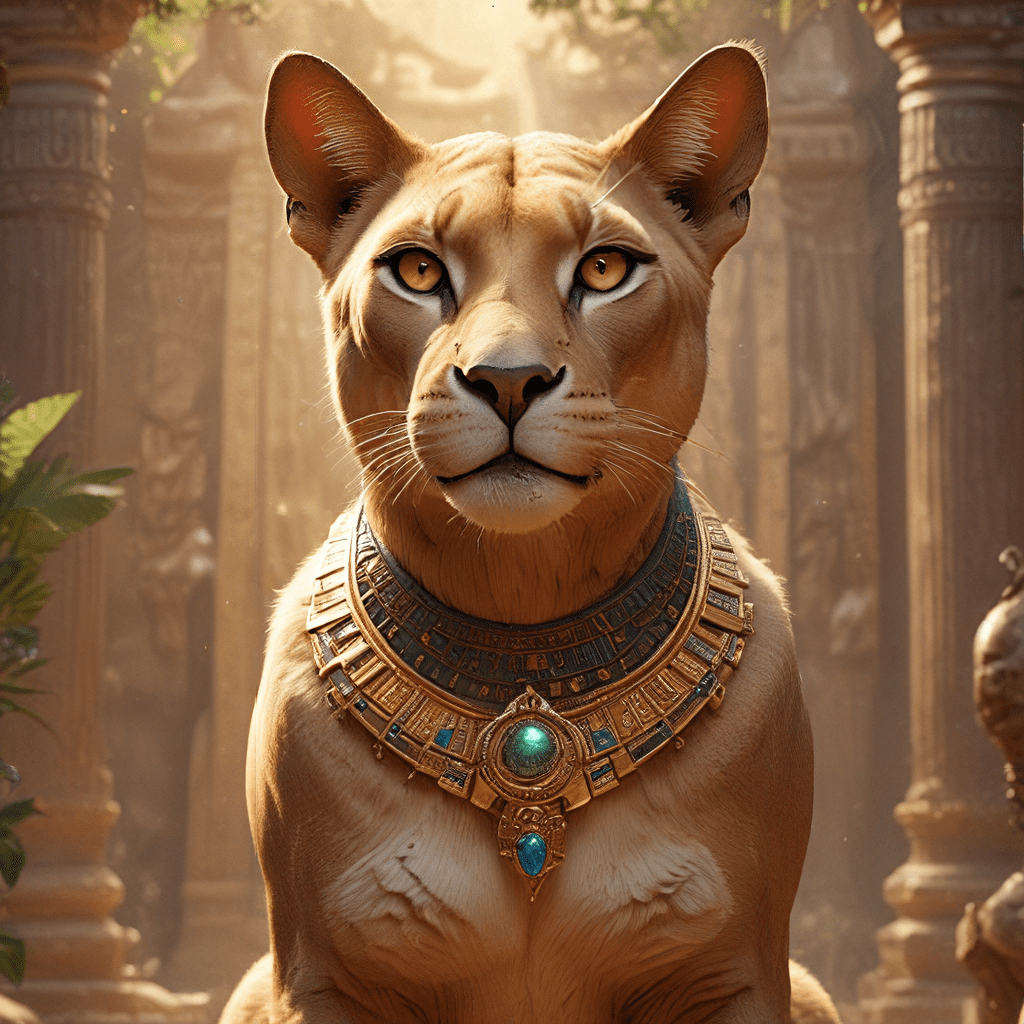1. Introduction: The Lioness of the Nile
Bastet, the Lioness Goddess, is a prominent figure in ancient Egyptian mythology, revered for her protective nature, joyful spirit, and embodiment of the feminine. Her name, believed to be derived from the Egyptian word “bsdt,” meaning “she who protects,” reflects her central role in safeguarding individuals and communities. Bastet was deeply intertwined with the city of Bubastis, where her magnificent temple stood as a testament to her worship and influence. The vibrant city held an annual festival in her honor, attracting pilgrims from far and wide, a testament to her widespread importance in Egyptian society.
2. Iconography and Symbolism: The Cat and the Sun
Bastet’s iconic imagery is instantly recognizable. She is often depicted as a woman with a cat’s head, reflecting her dual nature: the fierce strength and protective instincts of the lioness, and the grace, agility, and domesticity of the cat. The cat, in Egyptian culture, was a symbol of protection, strength, and the feminine. The cat’s ability to navigate both day and night, its hunting prowess, and its association with motherhood all contributed to its powerful symbolism.
Bastet’s connection to the sun god Ra is another significant aspect of her iconography. She was sometimes depicted with the sun disk, symbolizing her role as a protector against the scorching sun and its potential dangers. This association with the sun further highlights her protective role and her connection to the life-giving energy of the cosmos.
3. Bastet, the Protector: Warding Off Evil and Disease
Bastet was a formidable protector against evil spirits and harmful forces. Her ferocious nature, embodied in the lioness, provided a shield against the dark energies threatening the well-being of individuals and communities. She was also associated with plague and illness, a connection that stemmed from the ancient Egyptians’ observation of how cats would hunt and kill rodents, which carried diseases. This association, however, did not equate Bastet with disease itself; rather, she was seen as the one who could offer healing and protection from illness.
The “Eye of Ra,” a powerful amulet, was often associated with Bastet. This amulet, representing the sun god’s all-seeing eye, was believed to ward off evil and protect against harm. Bastet’s connection to the Eye of Ra further solidified her role as a guardian against everything that threatened peace and prosperity.
4. Bastet, the Bringer of Joy: Music, Dance, and Festivities
Bastet was not only a fierce protector but also a goddess of joy, celebration, and the arts. She was associated with music, dance, and the art of weaving, all activities that brought pleasure and beauty to life. Her playful nature was embodied in the cat, an animal known for its playful antics and gentle demeanor.
The annual festival held in Bastet’s honor at Bubastis, known as the “Feast of Bastet,” was a grand celebration of music, dancing, and merriment. People from all over Egypt converged on the city to partake in the joyous festivities, seeking Bastet’s blessings and celebrating her joyful spirit. Bastet’s association with festivity and celebration was linked to the cycle of life, fertility, and abundance, aligning her with the positive aspects of nature and the joy of existence.
5. Bastet and the Divine Feminine: Motherhood, Sexuality, and Power
Bastet’s role in Egyptian mythology extends beyond protection and joy; she was also a powerful representation of the divine feminine. Her connection to motherhood, childbirth, and fertility was deeply rooted in her feline nature. Cats were known for their nurturing instincts and protective role in raising their young. Bastet, therefore, came to embody the nurturing and protective aspect of motherhood.
Bastet’s association with sexuality was another significant aspect of her representation of the feminine principle. While some interpretations of this association portray Bastet as a goddess of lust and sensuality, others view her as a symbol of the life-giving power of sexuality and its connection to fertility and the cycle of life. This association highlights the inherent power of the feminine and its ability to create and sustain life.
6. Bastet’s Transformation: From Lioness to Cat
Over time, Bastet’s image gradually shifted from the fierce lioness to the more domesticated cat. This transformation was likely influenced by the increasing domestication of cats in ancient Egypt. Cats became revered companions, safeguarding homes from pests and offering companionship. This shift reflects the evolving understanding of the feline nature, moving from wild power to gentle domesticity. Despite this transformation, Bastet’s core essence as a protector, bringer of joy, and embodiment of the feminine remained unchanged.
Bastet, the Lioness Goddess, continues to hold a special place in the hearts and minds of those who are drawn to her power, joy, and protective nature. Her legacy as a fierce protector, a bringer of joy, and a powerful representation of the divine feminine continues to inspire and captivate, serving as a reminder of the strength, grace, and wisdom inherent in the feminine spirit.




